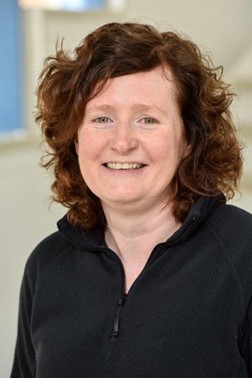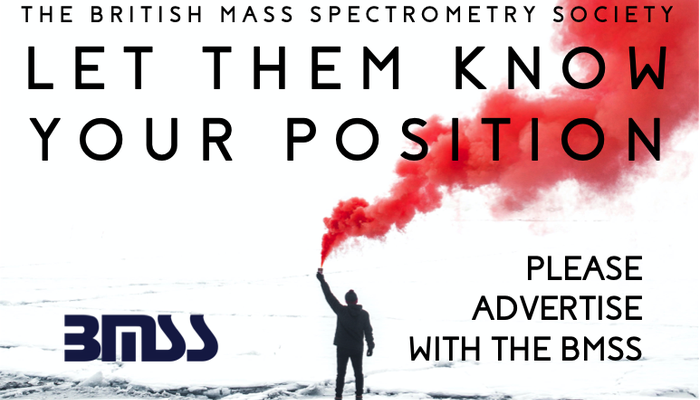Juile Herniman
Juile Herniman, Southampton University
Originally published April 2024
What persuaded you that mass spectrometry could be a good career option for you?
Rather than me choosing mass spectrometry, I think mass spectrometry chose me! My first degree was in Geology and Geography, and I followed this with a job as a technician at Cardiff University. There I was part of the Earth Science Sedimentary Research Group and completed a part time MSc degree in Environmental and Engineering Geology. I loved field work and took part in a research cruise to the Mediterranean Sea and supported field work activities across South Wales and the Humber Estuary. Back in the laboratory, I maintained the analytical equipment and helped PhD students and researchers analyse their samples. During this time, I did come across mass spectrometry occasionally as I sometimes helped the technician running the departmental ICP-MS system.
How did you find your first position in running a mass spectrometry service?
After nine years at Cardiff, I was looking for a move to Southampton and applied for a fixed-term technical position with Professor John Langley in the School of Chemistry. Even though I had not worked previously with mass spectrometers, I thought my laboratory and technical skills could be transferable to the role. John had just secured funding for two MALDI-TOF instruments and a technician to develop mass spectrometry methodologies for oligonucleotide analysis and was looking for someone to work with him on this project. I was a bit concerned that being laboratory based the job would be a bit boring for me, but as it was only a fixed-term position I thought I could always move on; 25 years later I am still here! At that time, the facility at Southampton consisted of a VG-70 SE magnetic sector instrument with EI, CI and FAB sources and a Micromass Platform II open access LC-MS system (ESI and APCI sources). Shortly after I started work in Chemistry, the two MALDI-TOF instruments arrived, and I was involved in the installation and training.
How do you handle the wide range of applications and encourage new users to use your service?
The mass spectrometry facility here at Southampton has expanded over the years to meet the demands of research chemists. We consult with users at an early stage to provide the most appropriate instrumentation for their current and future research projects. Funding is always difficult to come by, but we have been successful over the years to purchase a wide range of instrumentation and ancillary equipment. We now offer a variety of chromatographic options including GC, UHPLC and UHPSFC coupled to different ionisation sources and analysers. We also specialise in high resolution mass spectrometry and provide ion mobility options. This means that we can analyse almost any type of sample that passes through the laboratory. Recently we commissioned 2D GC-MS (LECO 4D BT and HRT) and 2D LC-MS (Waters Cyclic) instrumentation for the separation and analysis the most complex of samples. This project was funded by EPSRC in conjunction with mass spectrometrists at the Universities of Bath, Portsmouth, Swansea and Surrey.
To analyse large numbers of samples we provide open access mass spectrometry and were the first lab in academia to follow the open access model developed by Frank Pullen and George Perkins for pharmaceutical chemists at Pfizer1. We achieve this via the RemoteAnalyzer® web-based interface developed by SpectralWorks Ltd. RemoteAnalyzer is vendor independent which means that we do not have to rely on one type of open access provision from a single manufacturer. We can install the most appropriate instrument for the job and the open access interface and output for the chemists is identical. This also means that we do not have to provide multiple software options for data processing.
How do you attempt to make the service you offer environmentally sustainable?
To make the service as environmentally friendly as possible, we assess the environmental impact of the whole laboratory and every method we currently use. We look at the types of solvent used, the flow rates, column dimensions and the time it takes for each method to run. We also use energy saving devices where we can and ensure that all waste is minimised. We are currently working on a project to compare the environmental impact of methods using reversed phase UHPLC-MS compared to ultrahigh performance supercritical chromatography (UHPSFC) -MS and use AGREEprep2 to include an assessment of different sample preparation techniques. Many compounds conventionally analysed using reversed phase UHPLC could easily be analysed using SFC and since this utilises recycled CO2 as a mobile phase with a lower consumption of organic solvent it is often considered a much greener technique.
What is your view on having and keeping good working relationships with instrument manufacturers?
It is essential to have good working relationships with manufacturers. It enables you to find out about new instrumentation at an early stage of development and you can also feed back to the manufacturers any new chemistries being developed by colleagues that may require novel chromatography and mass spectrometry solutions. Sometimes grant applications need to be completed quickly and hence staying connected with a representative from the manufacturer helps with quotes in short time scales! Good relationships with manufacturers also put your laboratory in an advantageous position to beta test new equipment and in the past, we have received instrumentation on loan for specific research projects.
What is your opinion about the impact that Artificial Intelligence will have on mass spectrometry services?
That is a good question and when I asked the PhD students in our group the same thing, they said I should use ChatGPT to answer. I have not really thought too much about the use of AI and mass spectrometry services although I hope that it will be used in an effective way to streamline some of the methods and hence make them more sustainable. The use of AI to predict the optimum separation or mass spectrometric method from a structure or group of structures can only be a good thing, as long as the need for trained mass spectrometrists does not disappear totally!
Could you sum up your thoughts on career prospects for young people in operating a mass spectrometry service?
As I mentioned previously, I thought I might be bored working in a laboratory all the time, but the variety of instrumentation and applications certainly keeps things interesting. If you work for any University MS service, then the range of applications you will deal with will be huge! There are many opportunities to develop your own research and work with academic teams, I have worked on everything from small natural products, large peptides, proteins, oligonucleotides, rotaxanes and complex mixtures such as petrochemicals. I have been fortunate to present some of my work at national and international conferences and user group meetings and now have friends working in MS from all over the UK. If you want to learn about different instruments, different software packages and different chemistries quickly, I would definitely recommend working for a mass spectrometry service.
References
1.F.S. Pullen, G.L. Perkins, K.I. Burton, R.S. Ware, M.S. Teague, J.P.Kiplinger. Putting mass spectrometry in the hands of the end user. J. Am. Soc. Mass Spectrom. 1995, 6,394.
2.W. Wojnowski, M.Tobiszewski, F.Pena-Pereira, E.Psillakis. AGREEprep-Analytical greenness metric for sample preparation. Trends Analyt Chem. 2022, 149 116553.
Acknowledgements
Julie Herniman is employed as a senior experimental officer/research technical professional at the University of Southampton. She works alongside Prof. John Langley in the Chromatography and Mass Spectrometry facility within the School of Chemistry. She specialises in supercritical fluid chromatography-mass spectrometry and high-resolution mass spectrometry.

